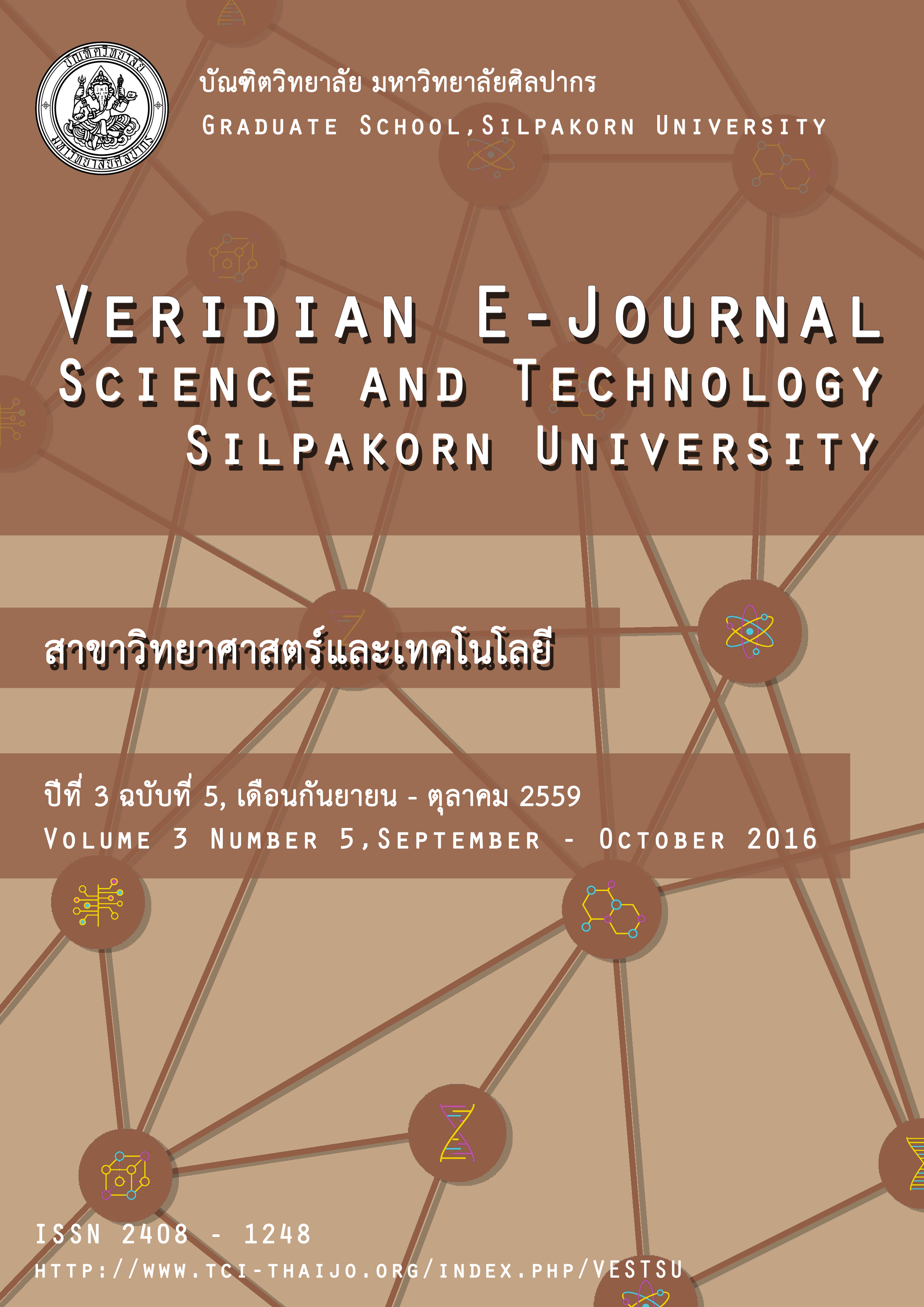การจัดการขยะแบบบูรณาการในชุมชน
Main Article Content
Abstract
ความก้าวหน้าของเทคโนโลยีด้านบรรจุภัณฑ์ และการเปลี่ยนแปลงวิถีชีวิตของคนไทยในปัจจุบัน ทำให้ขยะ กลายเป็นปัญหาทางสิ่งแวดล้อมที่สำคัญของประเทศ ปริมาณที่เพิ่มขึ้นอย่างรวดเร็ว ขณะที่สัดส่วนขยะย่อยสลายได้กลับลดลง ทำให้ปัญหาขยะตกค้างกลายเป็นวาระแห่งชาติ การจัดการขยะต้องอาศัยการบูรณาการตั้งแต่ ผู้ผลิตขยะ คือชุมชน จนถึงผู้กำจัด คือภาครัฐ การแก้ปัญหาขยะที่ต้นเหตุ ถือเป็นมาตรการที่สำคัญที่สุดในกระบวนการจัดการมูลฝอยแบบบูรณาการ ชุมชนควรต้องรับผิดชอบดูแลขยะของตนเป็นก้าวแรก บทความนี้นำเสนอการจัดการขยะของหมู่บ้านสำนักเย็น ชุมชนตัวอย่างในตำบลท่าเรือพระแท่น อำเภอท่ามะกา จังหวัดกาญจนบุรี การจัดการขยะในชุมชนเริ่มตั้งแต่การสร้างกิจกรรมที่กระตุ้นให้สมาชิกชุมชนลด ละ เลิก การผลิตขยะถุงพลาสติกภายในชุมชน โดยใช้มาตรการเชิญชวน ในรูปแบบของการแข่งขัน เพื่อสร้างความกระตือรือร้น ในหมู่สมาชิก นอกจากนี้ยังมีกิจกรรมการลดขยะ ไม้ ใบไม้ โดยอาศัยภูมิปัญญาท้องถิ่น ในการเปลี่ยนไปเป็นวัสดุเพาะกล้า มีการให้ความรู้ และสนับสนุนอุปกรณ์ในการคัดแยก พร้อมทั้งจัดตั้งธนาคารขยะเพื่อรองรับขยะที่คัดแยกได้ นอกจากนี้ยังส่งเสริมให้สมาชิก ได้เรียนรู้เทคโนโลยีการจัดการขยะแบบใหม่ ๆ โดยการสร้างศูนย์เรียนรู้ขึ้นภายในชุมชน ขณะเดียวกัน ก็สร้างความตระหนักเรื่องการทิ้งขยะในหมู่เยาวชนของหมู่บ้าน กิจกรรมภายในชุมชนมีระบบการบริหารจัดการที่ชัดเจน ดำเนินงานโดยใช้หลักจิตวิทยา เสียสละ ไม่มุ่งเน้นกำไร เห็นแก่ประโยชน์ของส่วนรวมเป็นสำคัญ มีโครงข่ายความร่วมมือเชื่อมโยงระหว่างภาครัฐและชุมชน โดยรัฐทำหน้าที่ส่งเสริม และสนับสนุนองค์ความรู้ต่าง ๆ ขณะเดียวกัน ก็ทำหน้าที่ประสานงานนำความสำเร็จของชุมชนเผยแพร่ไปยังภายนอก โดยการส่งผลงานเข้าการประกวดในระดับประเทศ ซึ่งได้รับรางวัลกลับมาสร้างความภาคภูมิใจให้กับสมาชิกชุมชนอย่างสม่ำเสมอ จัดเป็นแรงกระตุ้นสำคัญ ที่ทำให้ชุมชนเดินหน้าจัดการขยะอย่างต่อเนื่อง ผลงานของหมู่บ้านแห่งนี้เป็นตัวอย่างให้เห็นว่า ในการร่วมกันขับเคลื่อนการจัดการขยะในชุมชนให้เป็นไปอย่างยั่งยืน ความร่วมมือของคนในชุมชนเป็นแรงผลักดันที่สำคัญมาก ขณะที่แรงสนับสนุนอย่างจริงจังจากภาครัฐมีบทบาทรองลงมา
Advance in packaging technology and the changing lifestyle of people in Thailand nowadays have made solid waste become one of the nation’s environmental problems. Significant increasing of waste volume along with the decline of biodegradable currently push an issue of solid waste management into the national agenda. Waste management must be an integration plan coping with waste generator, i.e., communities, all the way down to waste disposer i.e., government agencies. As part of the plan, source reduction is considered vital to the success of an integrated solid waste management. Thus, making the community responsible for their waste is the key of the plan. This article presents waste management strategies of Sam Nak Yen village which is the model community in Tha Rua Phra Thaen district, amphor Tha Maka, Kanchanaburi province. Their waste management begins with the creation of activities that encourage community members to stop generating waste plastic bags. The activity is done in a competition style to build enthusiasm among its members. Green waste such as leaves, sticks, and woods is also reduced using a local wisdom to turn it into seedling materials. In order to promote waste recycling, sorting techniques and supporting equipment are provided for members. The garbage bank was established to accommodate waste from the segregation. The community encourages their people to learn new waste handling technologies by creating a learning center within the village. Meanwhile, an awareness about littering has been regularly raised among their young generation. All activities are managed in a simple and clear manners using psychological tactics, scarification and nonprofit-oriented, putting the interests of the public forward. A network of partnerships between government agencies and the community is established. The states support knowledge and acting as coordinator propagating the success of community to outside parties via national contest platforms. Rewards that regularly brought back become the pride of community members and are an important motivation that continuingly push the community to move forward on their waste management. The success of waste management in Sam Nak Yen community is an example showing that to make the community-driven waste management sustainable, the main driving force must come from cooperation of community members. A strong support from the government plays a secondary role.

